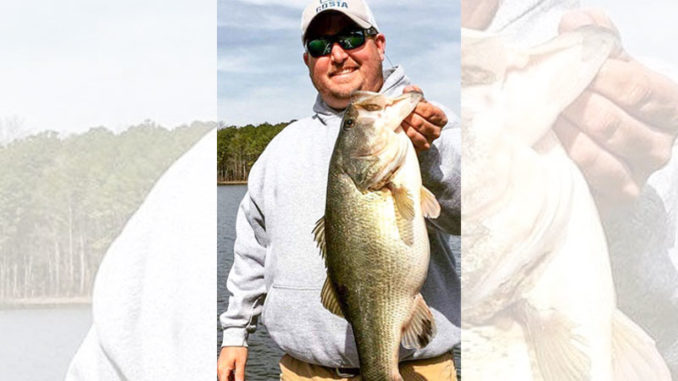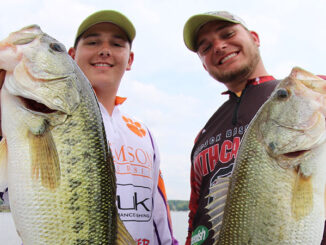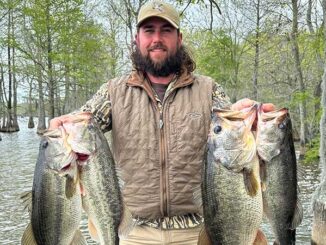
Weather plays big role in March for Jordan Lake bass
Bass fishing in March on North Carolina’s Jordan Lake is heavily dependent on February’s weather. Whether winter hangs on or spring winds blow in from the south determines whether bass remain in deep water. Or whether they move to shallower locations on their way to the spawning grounds. With a warming trend in the forecast, odds are, March fishing will come in like a lion.
“They’re going to start moving into the transition zones — those red-clay, chunk rock banks. Any time that water gets 47 to 50 (degrees), it really triggers that movement. Once they get there, they’re probably not going to leave. It doesn’t matter how cold it gets,” said Jonathan Phillips, a local tournament angler from Pittsboro, N.C.
When this occurs, Phillips turns his attention to the creeks, focusing on the first third back from the mouth. He looks for areas where he can position his boat in 15 to 20 feet of water and cast into 1 to 2 feet. These conditions are usually found in areas where the creek channel swings close to rocky or clay banks. As the water continues to warm, Phillips will look for areas in 10 to 12 feet of water that are a cast away from the bank as he works his way up the creek.
Water temperature determines lure selection
“When we’re starting out with 47- to 48-degree water, I like a No. 7 to No. 8 Shad Rap because it runs a little deeper,” Phillips said. “As it warms and the fish move shallower, I’ll switch to a shallower crankbait that runs in 3 to 5 feet of water. An S-Crank or the old-style Speed Trap is my favorite — in a crawdad pattern like crystal craw or a natural pattern like green pumpkin.
“When the water gets to the 52- to 54-degree range, you’re going to start getting more Chatterbait and spinnerbait bites. I like to keep the color simple with white and chartreuse, but the fish will be relating more to bushes, stumps, and laydowns. So I’ll use 20-pound fluorocarbon to keep from getting broken off.”
In early spring, Phillips prefers the upper lake — above US 64, believing it to turn on faster in an area where the fish naturally live shallower. Also, this area is less affected by spring rains than the river section. While any of the creeks facing the warm southwest winds are subject to heat faster, Phillips lists No Name, Bush, and Morgan creeks as areas of interest.




